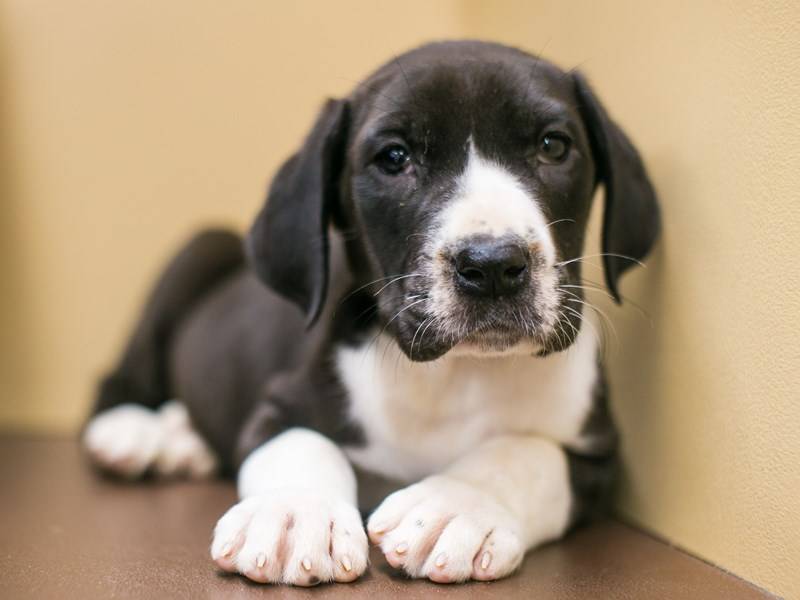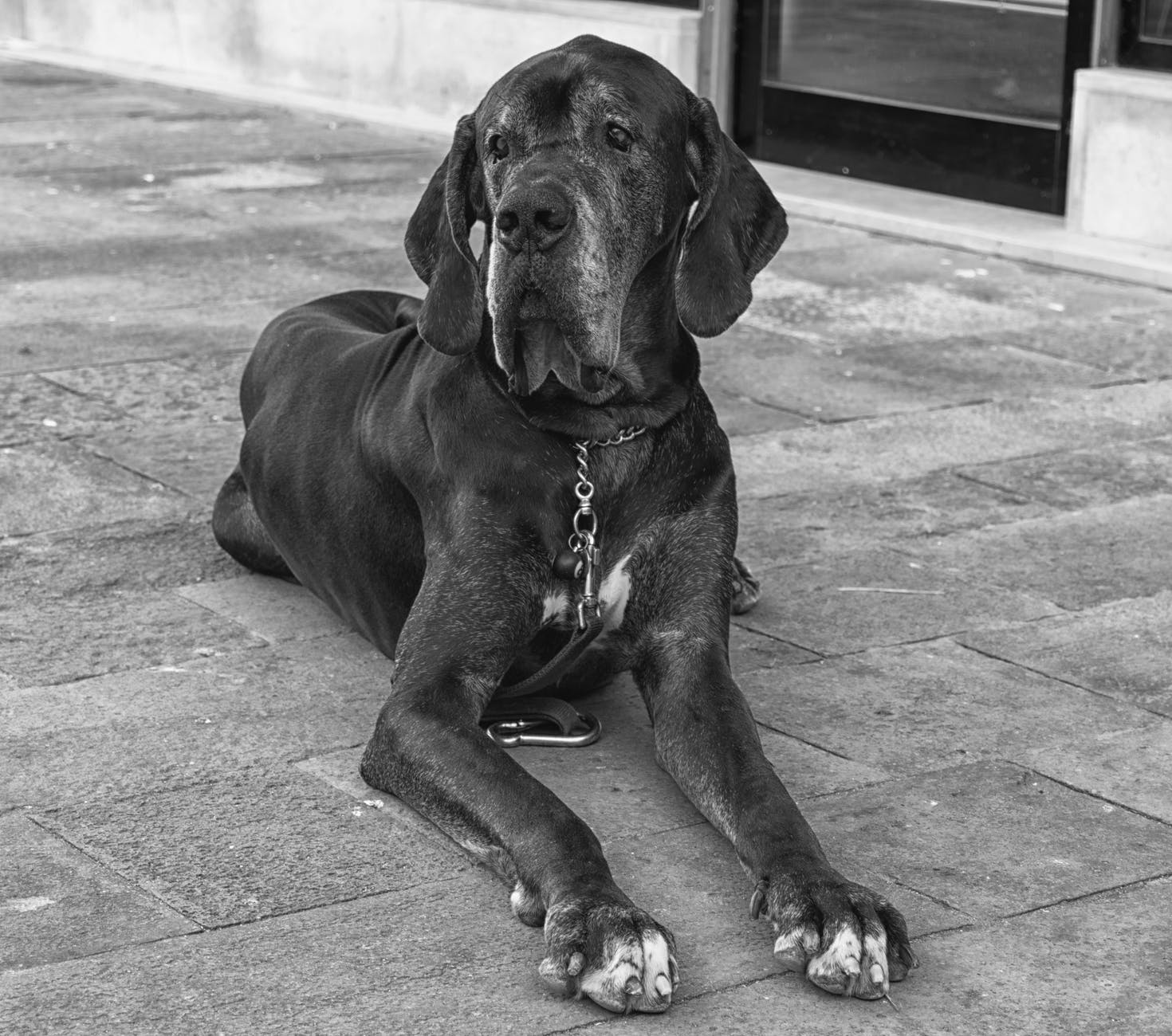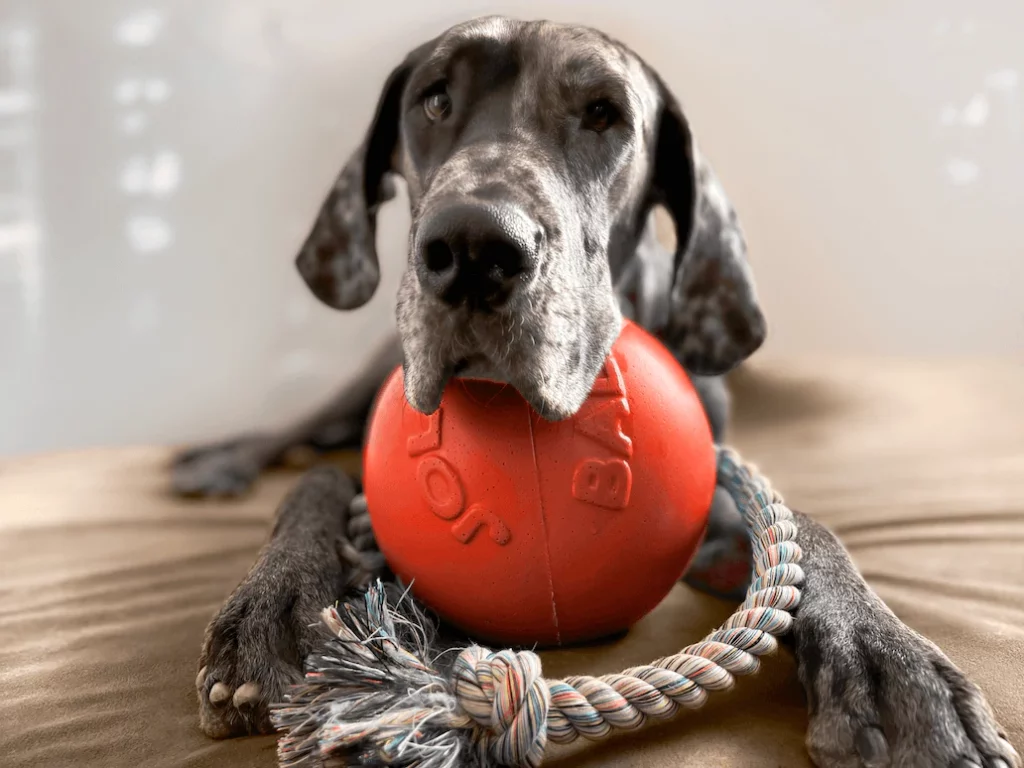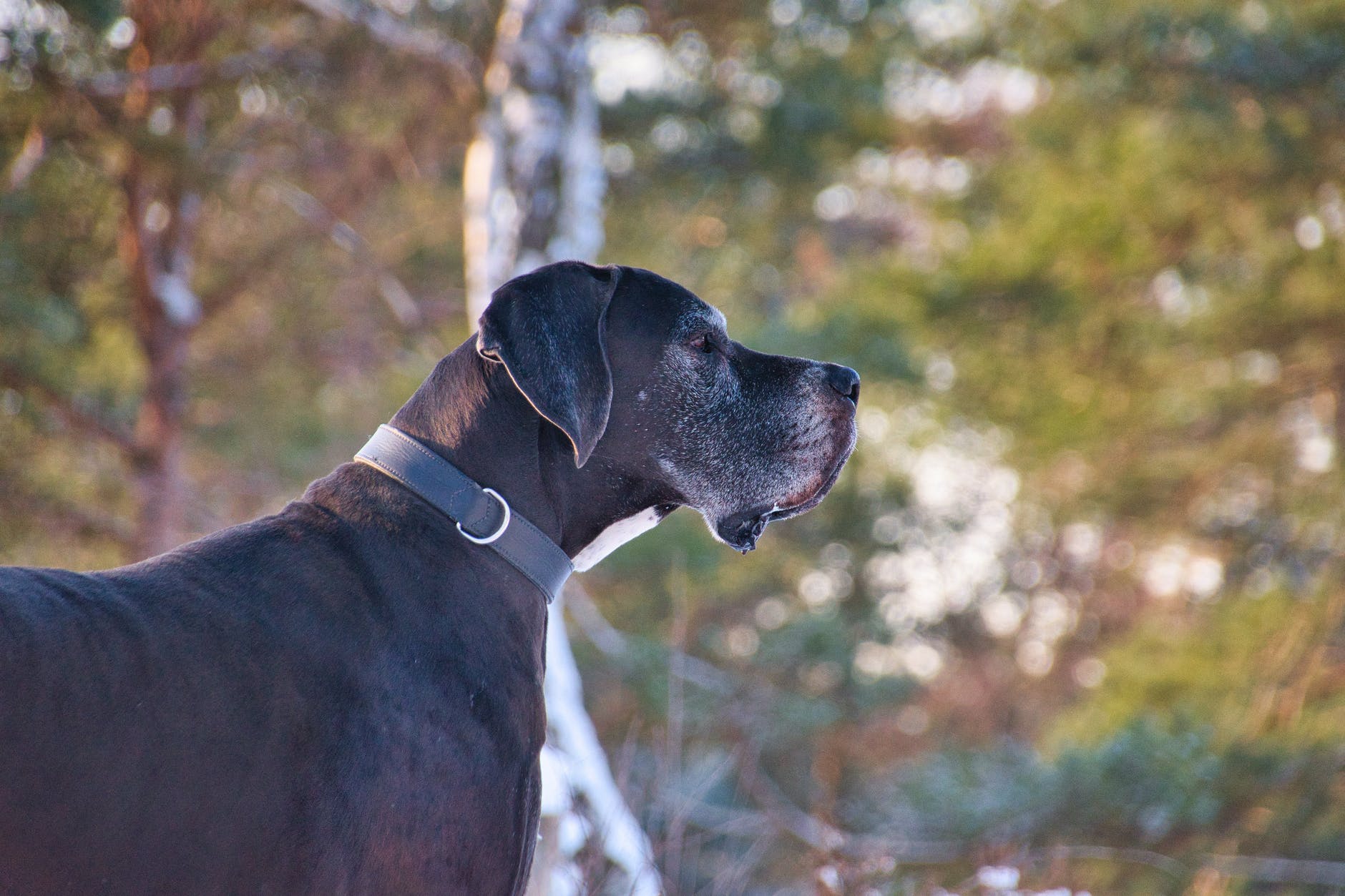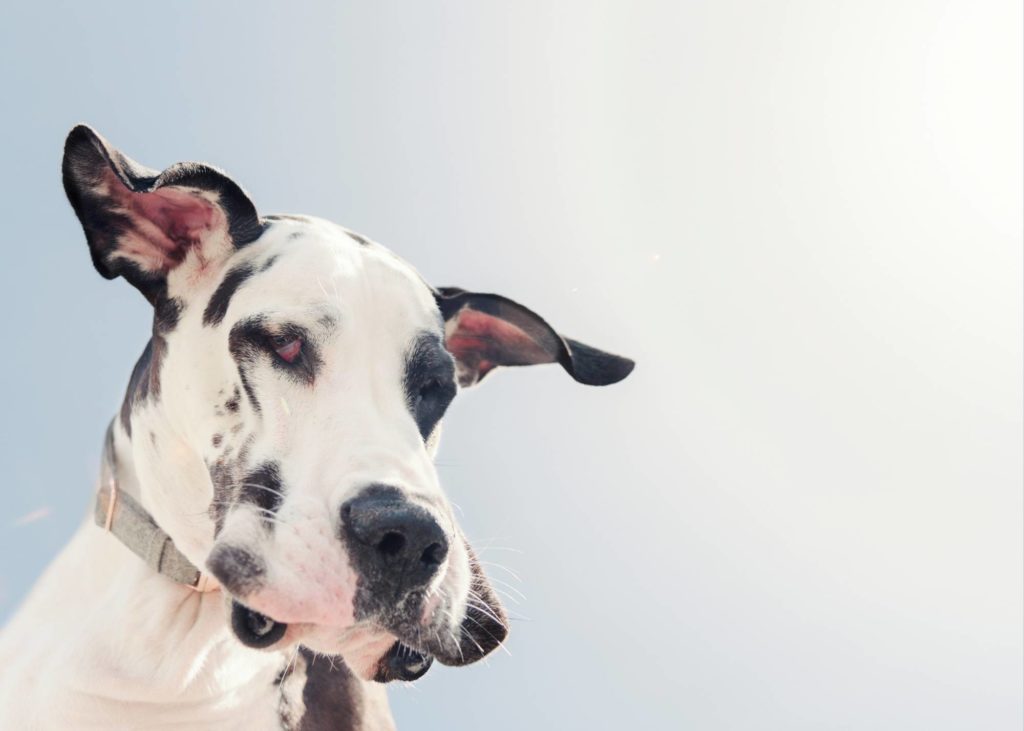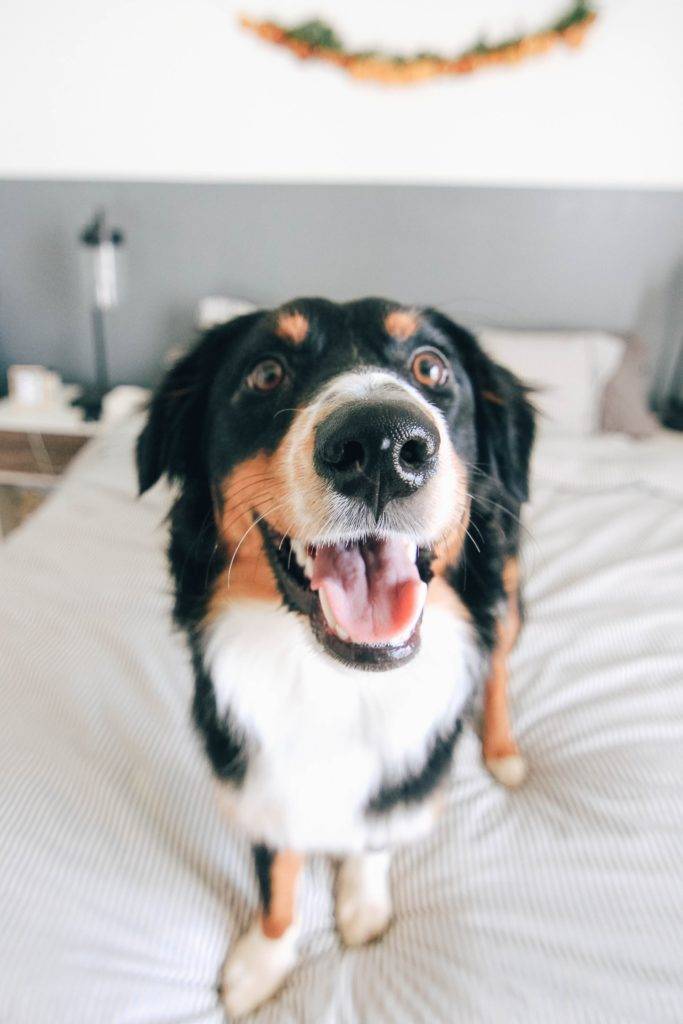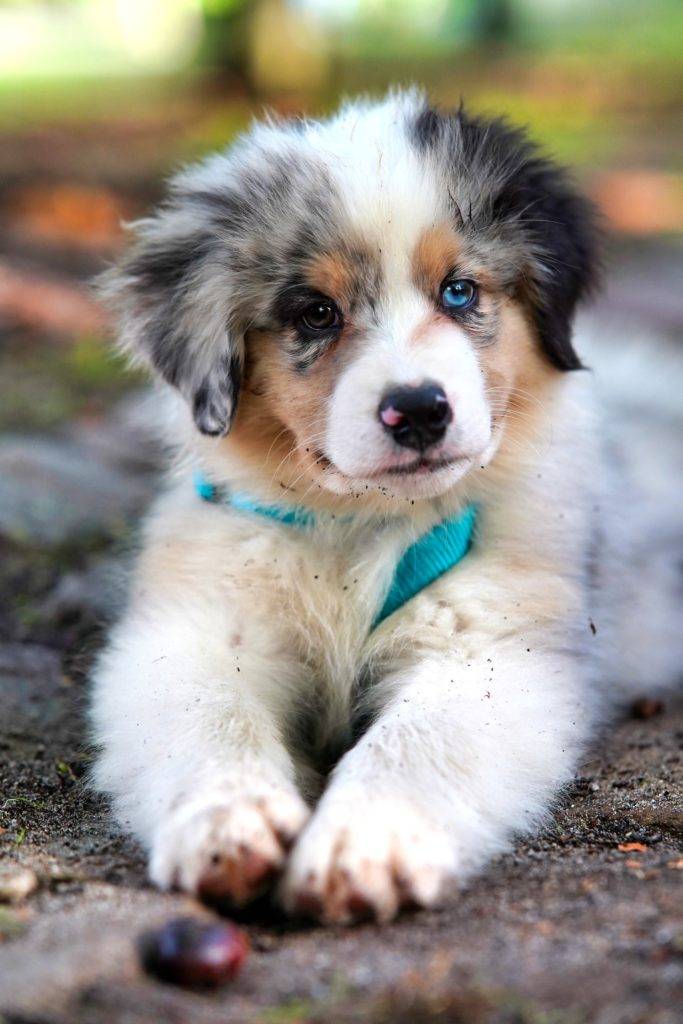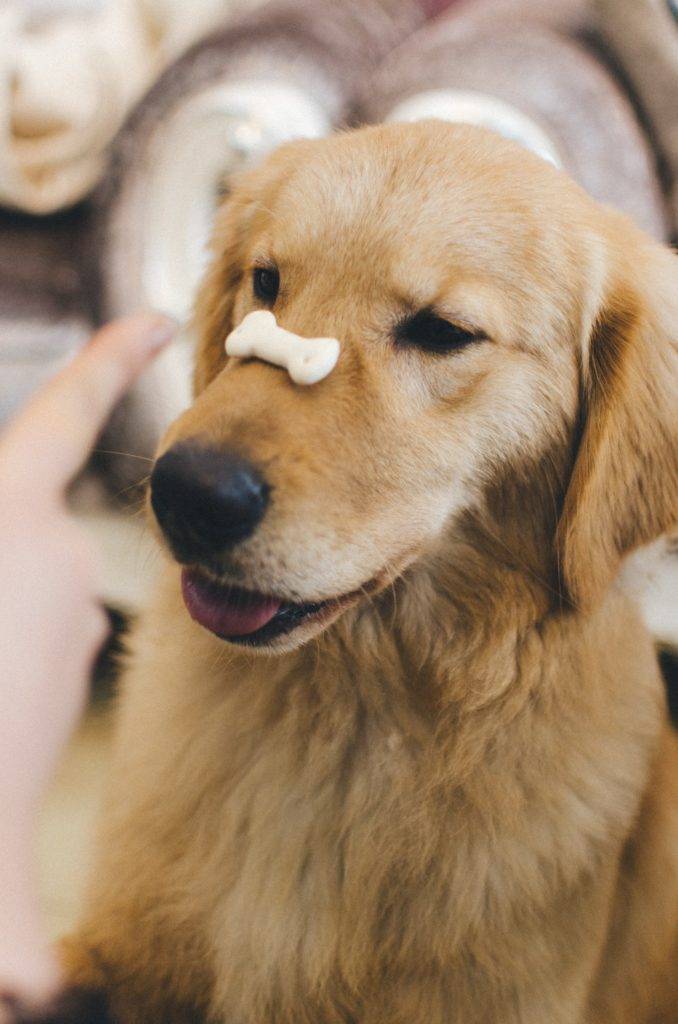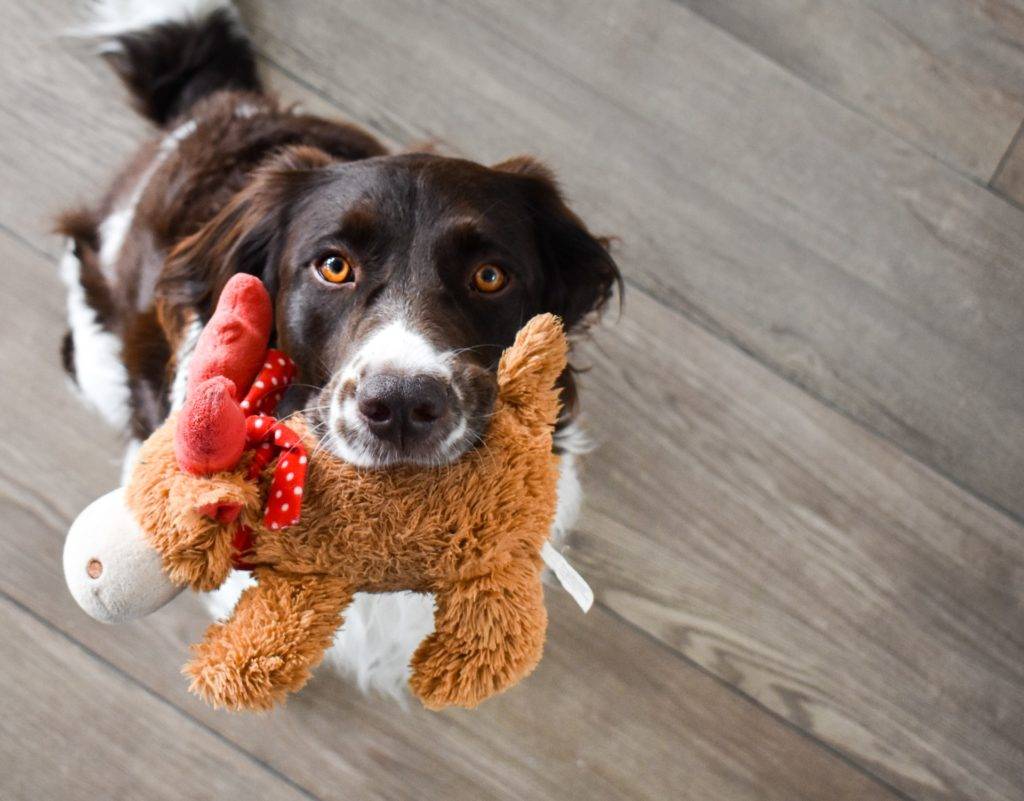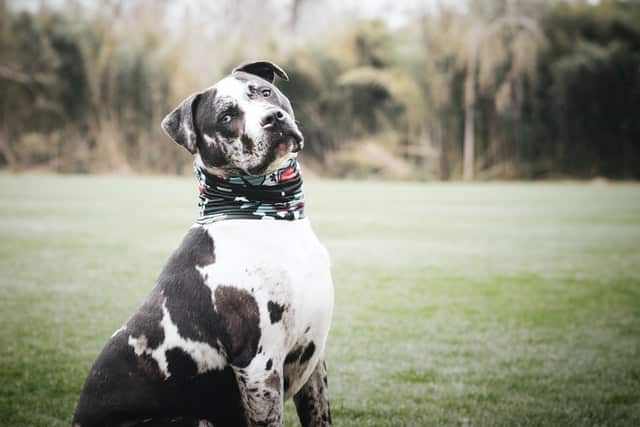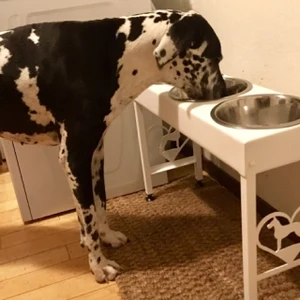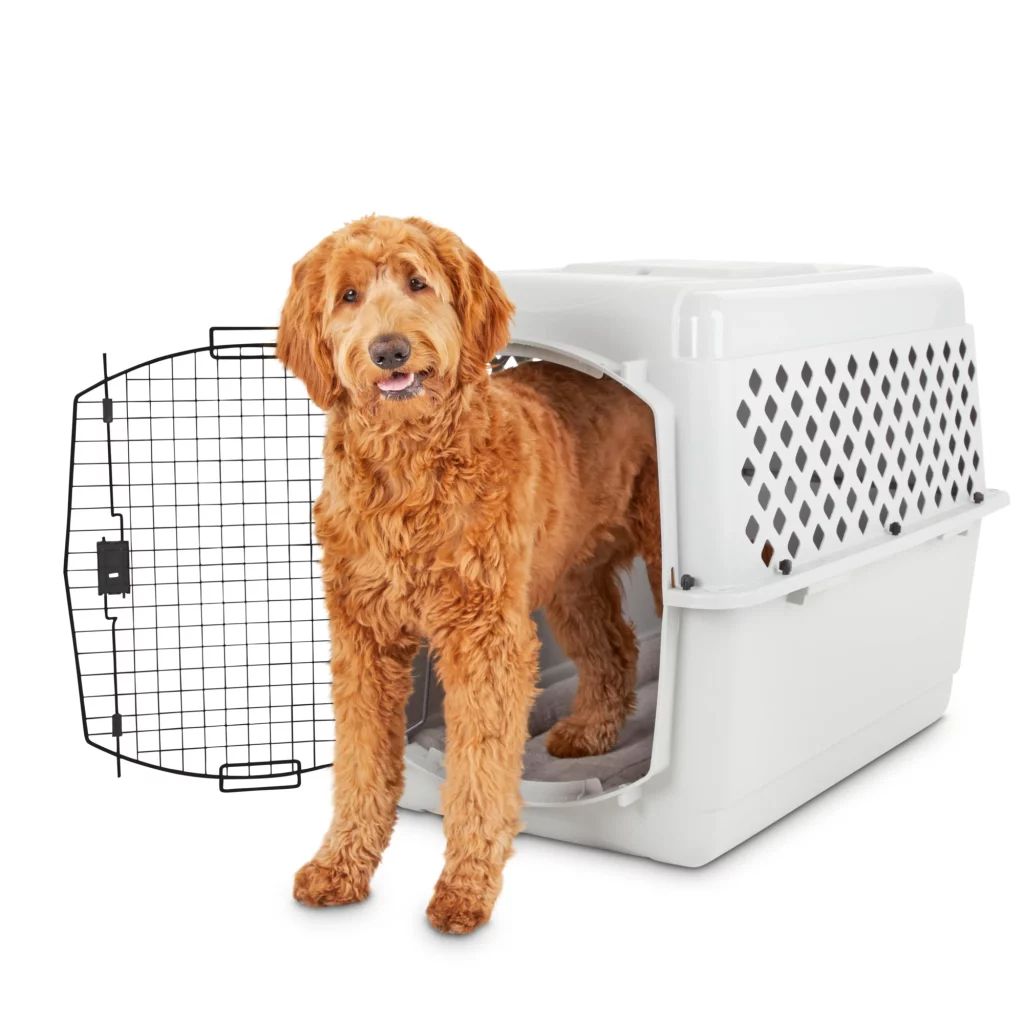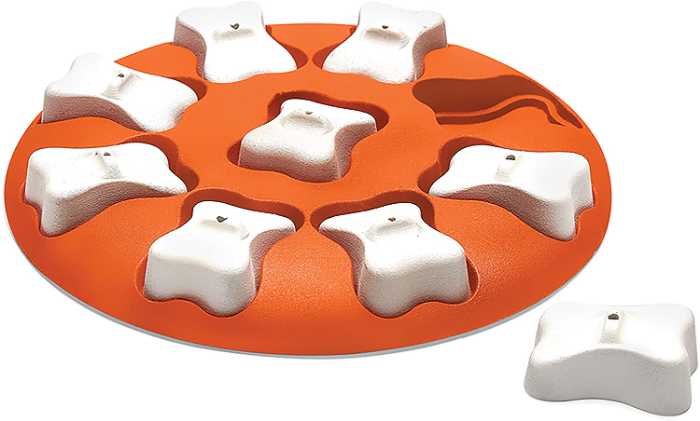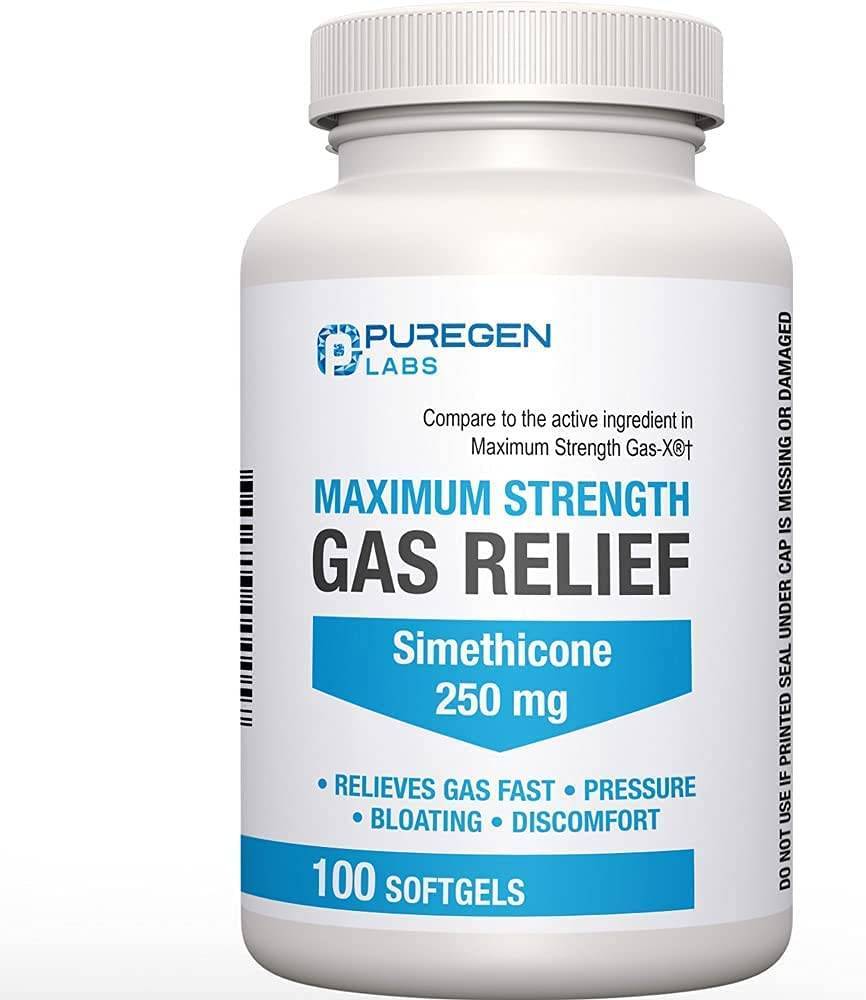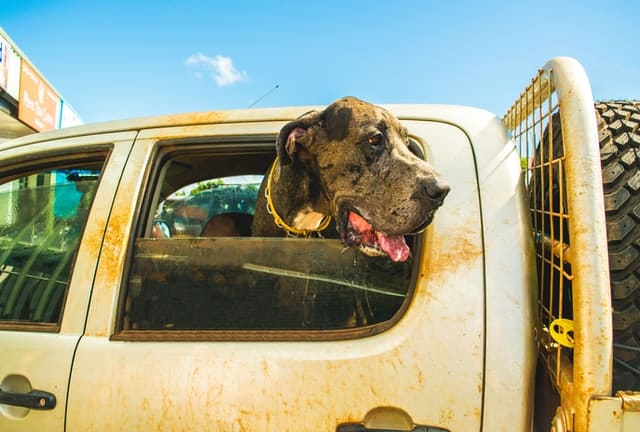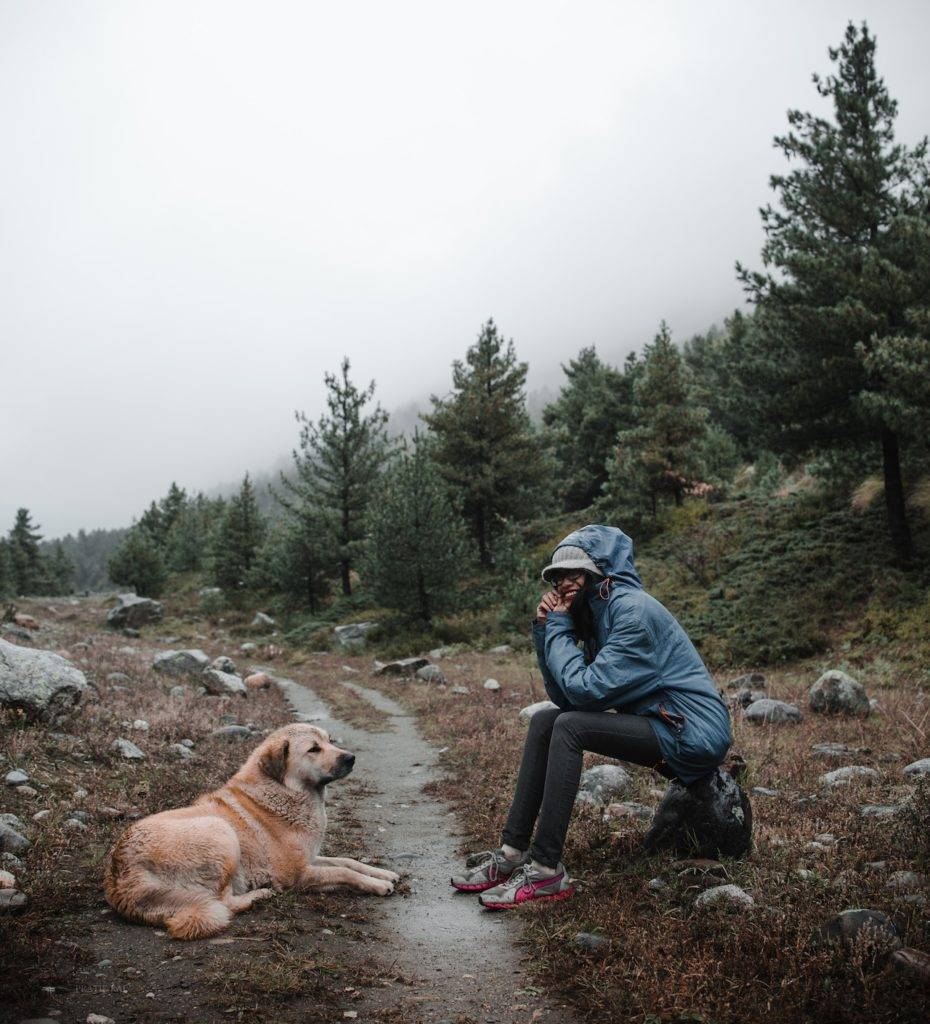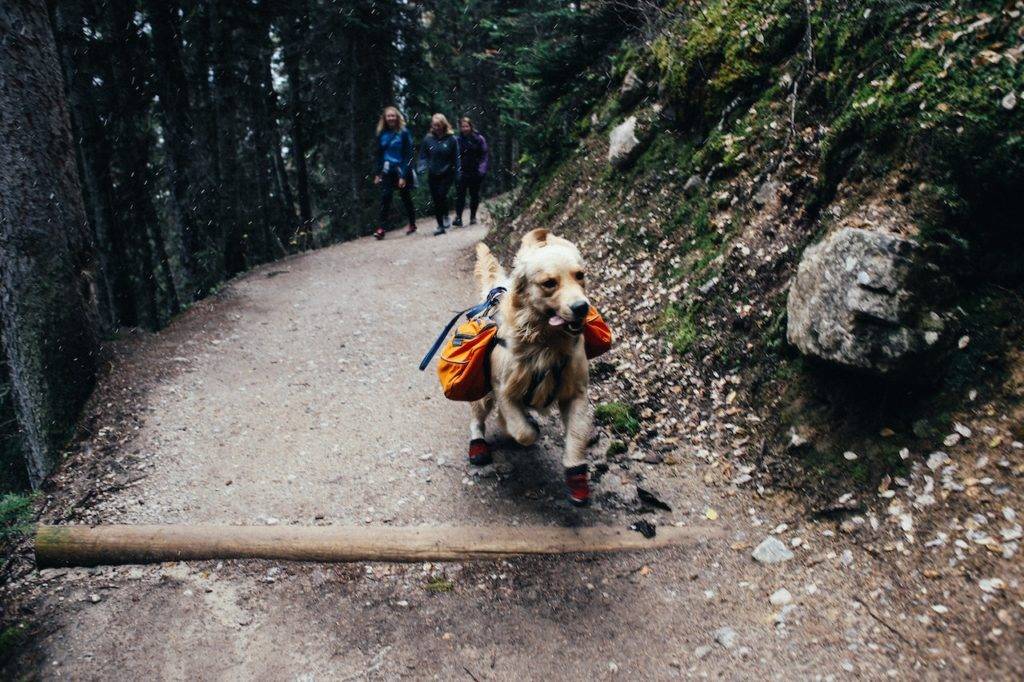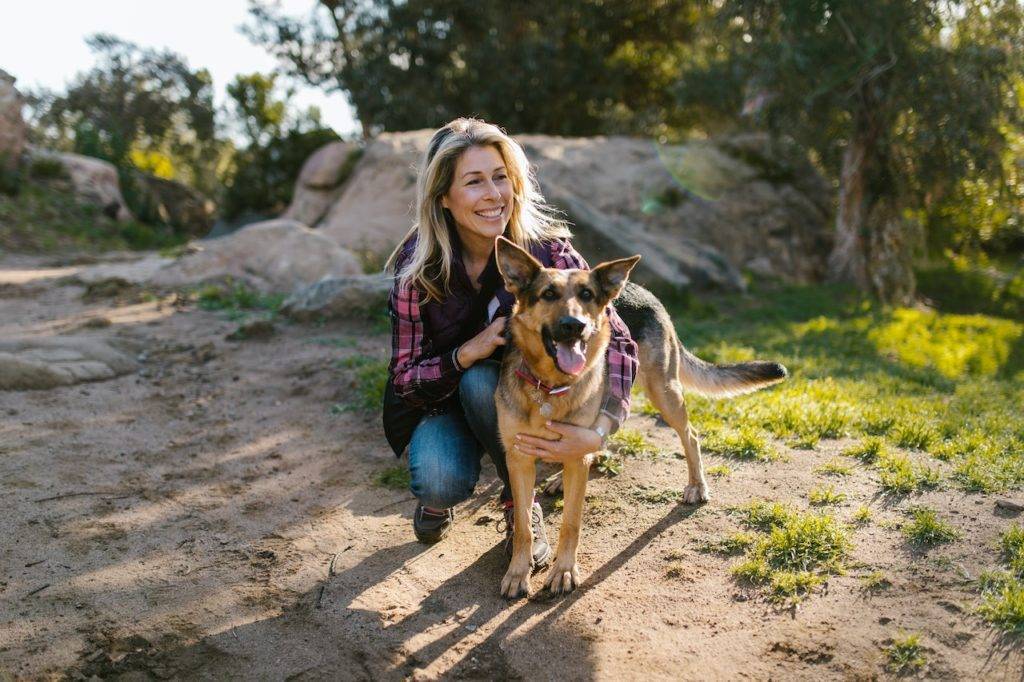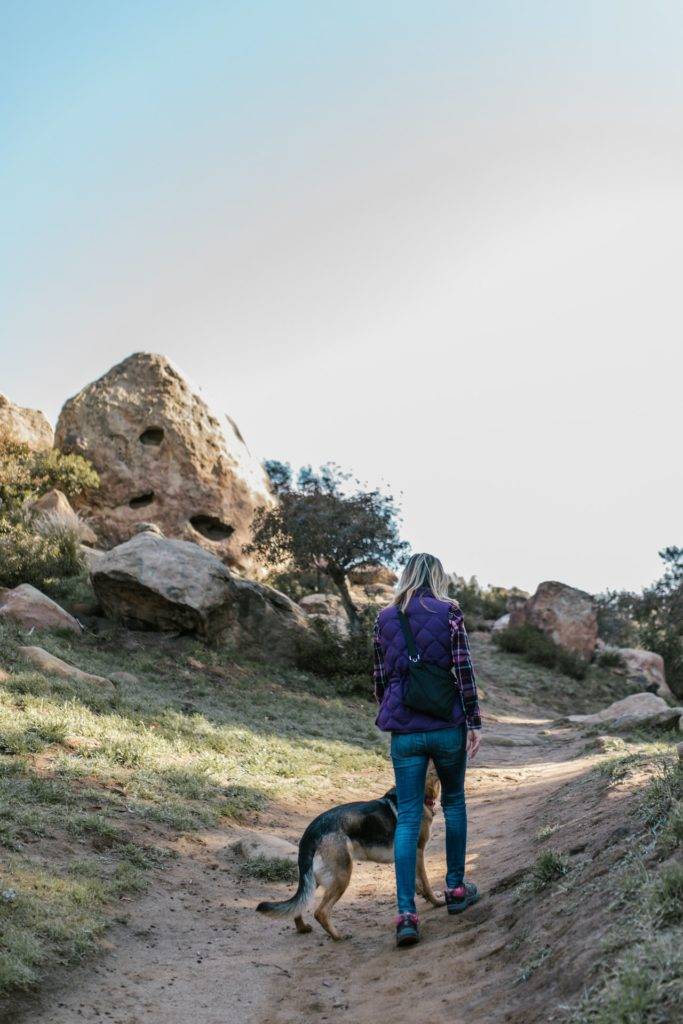It is time to BUST some myths about bloat and Great Danes!
This post is going to shake up EVERYTHING you think you know about bloat, GDV, torsion, and gastropexy, and we cannot wait to share it with you.
How do you prevent bloat? Are some dogs at higher risk of bloat than others? Does Gastropexy prevent bloat? Do I need to rest my Great Dane before and after meals?
Let’s get started!
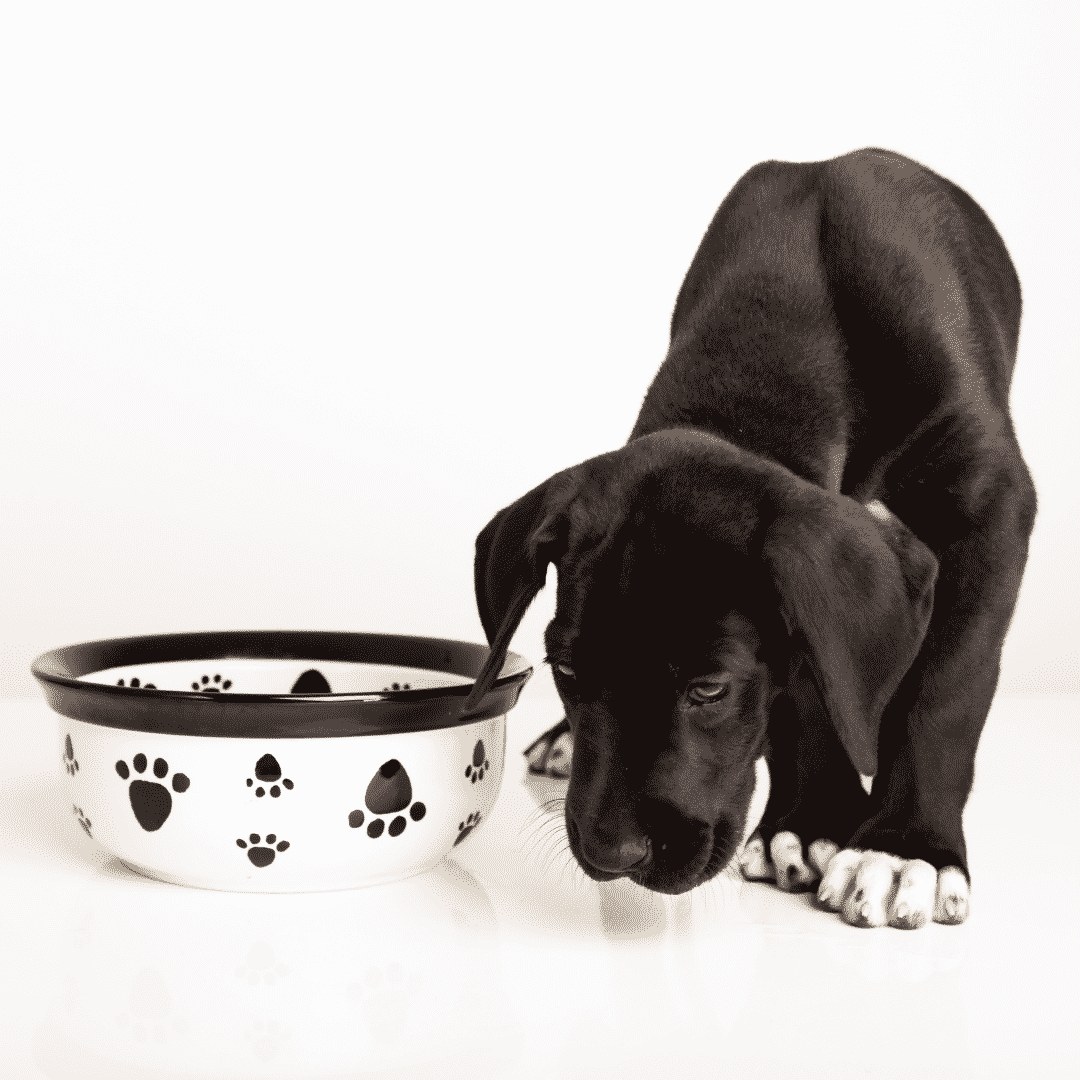
Myth #1 – Raised Feeders Prevent Bloat
Many people rely on raised or elevated bowls with the belief that it will help prevent bloat. The theory is that the dog will swallow less air and will be more comfortable eating.
HOLES IN THIS MYTH: In 1994 a study was done of over 1900 dogs with no prior history of bloat. They were surprised to learn that the dogs with raised bowls were 110% more likely to experience bloat than other dogs in the study that had bowls on the floor. Ruh-Roh.
Want to see more information on this study? Read it HERE.
Sure, Hello Danes. Whatever. Correlation does NOT mean causation, right?
We agree, which is why we believe more studies are needed here, but also that this information may be alarming AND valuable regardless!
When we look at dogs eating from raised bowls, we see dogs having to hold their neck straight outward and then bend their head at the jaw to eat.
This makes us question if it’s really ‘more comfortable’ than a dog that drops their head to the ground (and thus has a straight line from the teeth up into the esophagus). Dogs put their noses to the ground all of the time to graze, sniff and explore. It may look uncomfortable to us humans, but it’s not an unnatural position for a dog of any size to be in.
It’s important to keep in mind that there are MANY other risk factors associated with bloat, and this specific correlation requires more study to be truly conclusive.
It is fascinating, however, that this advice continues to hang on despite information that raised bowls may increase risk and that as of yet, it’s never been proven (only theorized) that raised feeders do anything to reduce risk or prevent bloat at all.
Our advice? Do what works for your family, but especially if your Dane has other major bloat risk factors (genetics, anxiety or aggression, poor gut health and IBS), you might consider putting those bowls on the floor.
Myth #2 – Resting Before/After Meals Prevents Bloat
This is probably the most common bloat prevention recommendation for Great Danes. This advice is so common that it’s to the point where many Dane owners experience significant anxiety if their dog eats anything and then jumps off the bed or goes for a walk, run or zoomies in the yard.
MYTH BUSTING: As of this writing (May, 2021) studies indicate that there is actually very little, if any correlation between exercise and bloat!
Dogs can and do bloat at ANY time, and rest or exercise may have very little to do with it.
As a matter of fact, a majority of dogs that experience bloat do so while resting or in the middle of the night on an empty stomach.
There is actually no conclusive scientific evidence that resting before or after meals can prevent bloat; and when we did the research for this article we observed something really interesting. Nearly every source we found (that supported rest before/after meals as a ‘preventative’) was a blogger, and none had a study to cite supporting this claim.
Let me repeat that. As of this writing, we cannot find a SINGLE scientific source that shows resting before/after meals can actually prevent bloat, or that exercise CAUSES bloat. Only opinions that have been passed along.
Test this theory! Ask dog owners that have experienced bloat what was happening when their dog bloated. Many times it was late at night, and quite often 2-3 hours AFTER a large meal.
The heartbreaking part of this is that bloat is happening to dogs whose owners have lovingly and diligently rested them before and after meals for YEARS, leaving the owners heartbroken and frustrated. Because this advice has become so common, many Dane owners are stressed if their dog eats and then moves around, and that’s not fair.
This is a big yikes in the Dane community, in my opinion.
Here we go with the whole correlation/causation thing again, too: for those did bloat while exercising, it may have just been a matter of chance and timing…or the dog was actually experiencing anxiety, stress, or other medical problems (example, a trip to the dog park or a long walk in the heat) and/or had significant other contributing factors.
As above, there are MANY, many other risk factors for bloat. Rest your dog if you feel it makes a difference, but don’t give yourself anxiety over your dog walking around the yard with a few treats on board.
Dogs that spend too much time in a crate can become bored, weak and overweight, which isn’t good either. So find a healthy balance between eating, rest and living life.

Myth #3 – Stomach Tacking/Gastropexy Prevents Bloat
Stomach tacking/Gastropexy is considered a ‘prophylactic’ procedure, in other words, a preventative. It involves suturing the stomach to the abdominal wall, and is usually done during spay/neuter surgery. Read our blog on the gastropexy HERE).
MYTH BUSTING – Gastropexy does NOT prevent bloat. We cannot say this loud enough.
If you have chosen Gastropexy for your dog, your dog is STILL susceptible to risk factors and may still bloat, however, bloat will be less likely to kill them.
Gastropexy helps prevent torsion, the dangerous part of a bloat event.
Torsion is what happens, during bloat, when the bloated stomach turns over on itself. Torsion is extremely serious, painful and deadly.
So really, this myth is a matter of semantics. Language. Gastropexy doesn’t really prevent bloat, but it can help prevent torsion…and that has merit.
Preventing torsion could mean that you have more time to get to the veterinarian before the bloat becomes more deadly than it already is. It is believed (though not formally studied, that we’ve seen) that Gastropexied dogs have better overall outcomes when bloat does happen.
We highly recommend this procedure, but only if you are working with a well-researched veterinarian that has a lot of experience doing it. Full pre-op screenings are a must.
For dogs that do bloat and successfully receive medical attention, gastropexy is highly recommended moving forward.
At Hello Danes, we believe in Gastropexy and consider it a safe, minimally invasive, and extremely beneficial option for all Great Danes when done by an experienced veterinarian.

Myth #4 – Only Large or Overweight Dogs Bloat
Many people with lean, fit, healthy dogs believe that their Great Dane is much less likely to suffer from bloat, heart conditions or otherwise.
While we 100% believe in keeping Danes lean, fit and active, read on:
MYTHBUSTING: All dogs are susceptible to bloat. As a matter of fact, some studies indicate that lean dogs have a slightly higher risk!
It is believed that unlike lean and fit dogs, overweight dogs have fat in the abdomen that protects and cushions the stomach.
Basically put, don’t believe for a moment that your dog is safe from bloat just because your dog is fit, active and lean. One of the most famous dock-diving Great Danes succumbed to bloat recently, which goes to show that any dog is at risk.
The benefits of keeping Great Danes lean and fit FAR outweigh anything else.
Overweight dogs have shorter lifespans, are less likely to be able to handle anesthesia (a key aspect of treating bloat, cancer and otherwise), are more likely to suffer from arthritis, diabetes and thyroid disease, and have more problems with their heart. No thanks!

Myth #5 – Food Causes Bloat & Large Scheduled Meals Prevent It
Many Dane owners maintain a rigid feeding schedule so that they can also make sure to rest their Dane before and after the meal. This practice comes from a fear that food itself is the enemy for Great Danes.
A lot of people who support this practice also believe that grazing is exceptionally dangerous, and will say that it’s better to minimize eating and meals by only allowing food intake once or twice each day.
MYTH BUSTED: Studies show that large meals (heavy, full stomachs) actually INCREASE the risk that a dog may bloat!
Yikes!
Why is bloat seen more in dogs fed single large meals? The large meal puts a lot of strain on the hepatogastric ligament, which holds the stomach in place. Over time, chronic stretching may cause this ligament to become elongated and weak; a common feature in Danes that succumbed to bloat.
Not only that, but dogs that are restricted to one large meal/day may feel anxious about food and scarf the meal down as fast as possible, which are also major risk factors for bloat.
We believe in moderation here. Smaller, more frequent meals offered in a low stress environment and a puzzle feeder (to slow down eating) are MUCH healthier.

Myth #6 – Gulping Water Causes Bloat
Gulping water causes blurping (burps that bring up water), a belly ache, and maybe a parasite from drinking dirty pond water…but the great news is that studies show almost no correlation between water intake and bloat!
Many Dane owners have anxiety when their Great Dane plays in the water, swims, snorkels, runs in the sprinklers or splashes around.
These activities are fun and enriching to dogs and like all fun and enriching things, carry some risk.
Aspiration pneumonia is a common example.
However, dogs that are acclimated to water and swimming (those that have safe water skills, in other words) are not at increased risk of bloat just because they are playing in the water.
As above, find a balance between stressing out when your Dane eats and moves, and letting your Dane be a dog!

Myth #6 – They Don’t Know What Causes Bloat
Many Dane owners feel hopeless and frustrated when they hear this. The good news is that studies are ONGOING!
MYTH BUSTING: While there is no scientifically conclusive information on what actually ‘triggers’ a bloat event, there is a lot of science into why some dogs succumb to it and others don’t.
Bloat has three primary risk factors: GENETICS, TEMPERAMENT and GUT HEALTH.
Not all Great Danes have the same risk factors. Some have MUCH more risk of developing bloat than others do!
Bloat is a disease of large, deep-chested breeds and is most commonly seen in dogs that have a genetic link (parent, sibling, etc. who also suffered from it), who are anxious, fearful or aggressive, and/or who have poor gut health (IBS, excess gas, etc.).
All dogs are at risk, unfortunately. Use our guide below to assess the risk factors for your individual dog, and minimize the risks associated with bloat!

BLOAT RISK FACTORS
We may update this list when additional research comes available. At this time, the following items are known to contribute to bloat risk; they are on the list because they are backed by at least some scientific inquiry and research (not just tall tales). Research is ONGOING!
Give your dog one point for each item. How many points did your dog get? Remember, ALL DOGS are at risk, and some dogs with high risk never bloat!
- Your dog is a Great Dane
- Your dog is over the age of 2 (risk increases with age)
- Your dog is over the age of 5
- Your dog has experienced bloat before
- Your dog has a 1st-degree relative that has experienced bloat (Parent, Sibling, etc.)
- Your dog has had or also had any other relative that experienced bloat (Grandparent, Aunt, Uncle, etc.)
- Your dog has an unknown or unstudied pedigree
- Your dog was tested and carries 1-3 of the known risk alleles (see more HERE)
- Your dog has a timid, fearful, or shy temperament
- Your dog is under-socialized
- Your dog is poorly trained and generally “difficult”
- Your dog is anxious (may present as severe separation anxiety, reactivity and nervousness)
- Your dog is often aggressive, snippy, or reactive
- Your dog has a strong tendency to resource guard (food, toys, bones, beds, etc.)
- Your dog suffers from IBS /Irritable Bowel Syndrome
- Your dog has chronic poor overall gut health (allergies, loose stools, diarrhea that you struggle to resolve)
- Your dog has heart/cardiac problems (which can cause a poorer prognosis if bloat happens)
- Your dog is eating a dry food that is heavy in peas, lentils, potatoes, or legumes (which can damage the heart and make a bloat prognosis worse)
- Your dog eats meals quickly and scarfs food down
- Your dog is anxious while eating or worries about food
- You use a raised feeder/bowls that are elevated more than 6-8″
- You serve a single large meal each day, in lieu of smaller more frequent ones
- Your dog is easily stressed by boarding, training, socializing, etc.
- Your dog has experienced a stressful event (including rehoming, boarding, moving, a party, kids, etc.)
- You often use harsh/punitive punishment based training (hitting, intimidation, kicking, scolding, etc.)
- You only feed a dry kibble diet (no fresh or wet food toppers or treats)
- Your dog is on a low-fiber diet
- Your dog has an exceptionally deep and narrow chest compared to others
- You feed a dry food from Victor, Fromm, Diamond, or 4Health that has fat in the first 4 ingredients
- Your Great Dane is from a breeder that is not invested heavily in genetics, structure, health, temperament and longevity

LEGITIMATE WAYS TO DECREASE BLOAT RISK
- Support only ethical breeders that understand genetics and are focused on health, temperament and longevity. Ask your breeder for a full history of the pedigree and verify no presence of bloat within at least 2 generations.
- Choose Gastropexy
- Work with a qualified behaviorist if your Dane is aggressive, anxious, fearful or timid. A veterinary behaviorist may be the best option for dogs with severe temperament problems
- Socialize your puppy
- Choose modern, positive science-based training methods (positive or balanced, not alpha/dominance or old school physical punishment training)
- Address gut health. We recommend adding a probiotic supplement and changing food to something that is backed by a lot of science and research. Excess gas is NOT NORMAL!
- Choose a properly formulated raw diet OR choose a kibble that is nutrient dense and add up to 10% of the total diet as fresh foods and raw toppers
- Add fiber to the diet (flaxseed or pumpkin are a good choice!)
- Feed smaller more frequent meals, not large single meals of dry kibble
- Encourage slow, stress-free eating (slow feeder bowls are great)
- Check the food label. Meat meal should be one of the top ingredients, as meat meal reduces bloat risk.
- Avoid foods that have a lot of peas, potatoes, lentils, garbanzo beans, or beans as these increase the risk of deadly DCM (heart damage) which can complicate bloat surgery and recovery.
- Reduce anxiety and stress where possible
- Know the signs of bloat and share that information with pet sitters, family and friends!
- Don’t breed Great Danes unless you are willing to fully study genetics, structure, temperament and health (including full health testing, structural evaluation and genetic screening to better the breed as a whole and reduce genetic risk)

READ THE STUDIES
We’re not going to tell you all of this and then run off and not provide the studies we read!
Definitely check this out, and remember. ALL GREAT DANES ARE AT RISK, no matter where they are from, and what you do.

As much as we want to prevent bloat, it’s not 100% possible. Even a dog with little to no known risk factors can suffer from bloat and torsion!
We prefer to look at bloat prevention in terms of minimizing risk. When you think of it that way and address the small things, positive changes can happen for the Dane community as a whole.
Get out there and enjoy your dog!!!!
The information contained in this post is for informational purposes only. We do our best to present the most up-to-date research, however it is up to the reader to make decisions regarding the health and well-being of their dog. We make no claims here to prevent or treat bloat or any other condition related to Great Danes. Find a veterinarian with GIANT breed experience, and chat with them.
Some of the products we list on our website contain affiliate links. If you choose to make a purchase, we may receive a small commission for referring you. We only recommend products that we truly believe in. This commission does not affect the price of the product and is used to fund our content and expenses related to operating this website.

